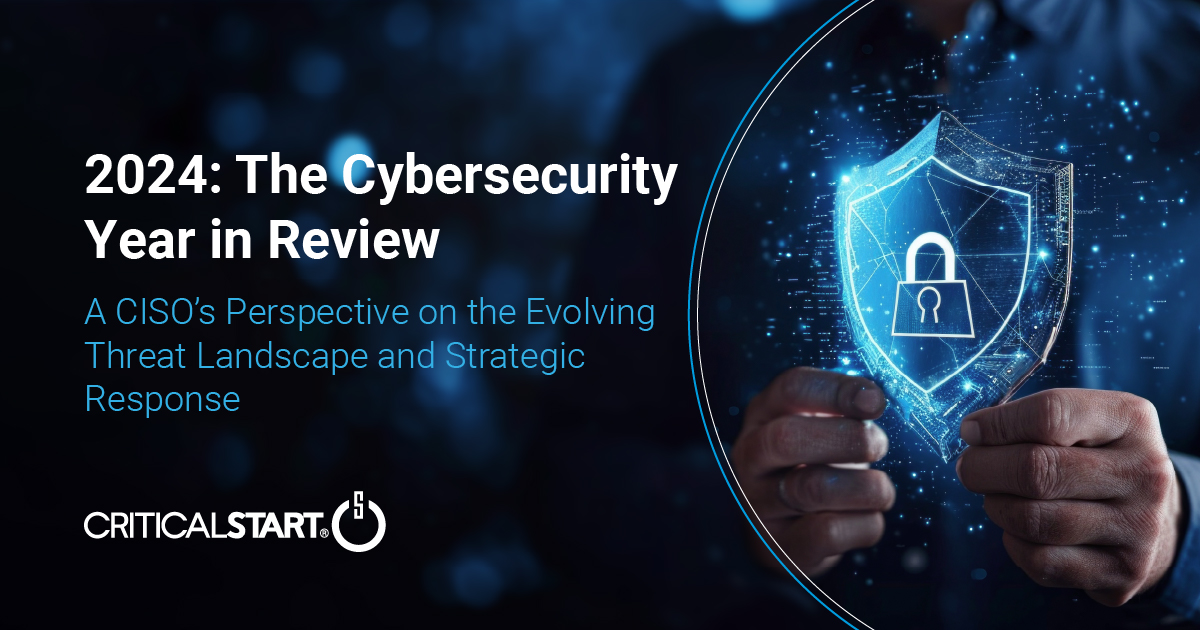2024: The Cybersecurity Year in Review

A CISO’s Perspective on the Evolving Threat Landscape and Strategic Response
Introduction
2024 has been a pivotal year in cybersecurity. From the relentless growth of AI-driven attacks to shifts in regulatory landscapes and the expanding role of the CISO, the challenges — and opportunities — have been profound. As we close this year, it’s critical to reflect on what we’ve learned and how we can prepare for the road ahead.
AI-Powered Attacks on the Rise
In 2024, attackers increasingly leveraged generative AI to bypass traditional security measures. AI tools enabled adversaries to craft highly convincing phishing emails and malicious deepfake videos, targeting senior executives and critical personnel. For example, deepfake-powered voice calls were used to authorize fraudulent financial transactions, undermining trust within organizations.
Furthermore, AI was used to automate reconnaissance, identifying vulnerabilities in networks more efficiently than ever. Advanced AI-driven malware also adapted its behavior in real-time, making detection and containment far more difficult.
Key Defense Strategies:
- Invest in AI-driven detection tools capable of identifying anomalies in behavior rather than just signature-based threats.
- Enhance phishing simulations and awareness training to include scenarios involving AI-crafted content.
- Develop layered defense systems that can adapt as threats evolve.
Supply Chain Vulnerabilities Persist
High-profile incidents such as the compromises of Microsoft, AT&T, and National Public Data exposed the ongoing risks in supply chain security. Attackers targeted smaller vendors to gain access to larger enterprises, underscoring the need for a zero-trust approach.
Mitigation Tactics:
- Continuous vendor risk assessments and penetration tests for third-party services.
- Real-time monitoring of supply chain dependencies using attack surface management tools.
- Contractual obligations for vendors to meet specific security standards.
FedRAMP Moderate Expansion
The push for FedRAMP compliance intensified in 2024, particularly for cloud-based organizations seeking to work with government entities. Mid-sized enterprises, traditionally excluded from such scrutiny, now face growing pressure to align with stringent controls.
Challenges included managing documentation requirements and implementing continuous monitoring. However, achieving FedRAMP compliance provided a competitive edge for companies able to demonstrate robust security practices.
Action Points:
- Build internal expertise in FedRAMP by training existing staff or hiring compliance specialists.
- Leverage automation tools to manage the heavy documentation and evidence-collection burden.
- Partner with third-party assessors early in the process to identify gaps.
AI Ethics and Governance
Regulators across the globe, particularly in the EU and the U.S., introduced measures to govern AI use, targeting fairness, transparency, and accountability. Non-compliance led to significant fines and reputational damage. For CISOs, this introduced a dual challenge: managing data security while ensuring AI systems adhered to ethical guidelines.
Key Considerations:
- Implement AI usage policies aligned with regulatory requirements such as the EU’s AI Act.
- Incorporate bias and fairness testing into AI lifecycle management.
- Collaborate with legal and data teams to ensure compliance with privacy and ethical standards.
Balancing Security Investments in a Tight Economy
The economic pressures of 2024 forced CISOs to reevaluate their spending strategies. Boards demanded measurable ROI on security programs, requiring CISOs to move beyond a “fear-based” narrative to a business-aligned justification.
Key trends included the adoption of pay-as-you-go cybersecurity services and an increased reliance on managed service providers (MSPs) to provide cost-effective security operations. However, this shift also brought challenges in maintaining visibility and control.
Best Practices:
- Develop metrics that quantify risk reduction and align them with business objectives (e.g., reduced downtime, avoided compliance fines).
- Prioritize investments in technologies that address multiple risks, such as XDR (Extended Detection and Response) platforms.
Funding for Resilience Over Prevention
The shift from prevention to resilience became a defining budgetary trend. With breaches considered inevitable, organizations invested heavily in incident response, disaster recovery, and cyber insurance to minimize damage and recovery time.
Strategic Insights:
- Allocate resources to tabletop exercises and live incident simulations to improve response readiness.
- Evaluate cyber insurance policies carefully, ensuring they cover emerging risks like AI-driven attacks.
- Build redundancy into critical systems to reduce downtime during incidents.
The challenges of 2024 have tested the resilience of security leaders, but they have also highlighted the critical importance of collaboration, innovation, and adaptability. As CISOs, our mandate is clear: to secure the present while building for a future where security is a seamless enabler of business success.
Here’s to a stronger, smarter, and more secure 2025.
George Jones
Chief Information Security Officer
In his role as the CISO, George defines and drive the strategic direction of corporate IT, information security and compliance initiatives for Critical Start, while ensuring adherence and delivery to our massive growth plans. George was most recently the Head of Information Security and Infrastructure at Catalyst Health Group, responsible for all compliance efforts (NIST, PCI, HITRUST, SOC2) as well as vendor management for security-based programs. George brings more than 20 years of experience with technology, infrastructure, compliance, and assessment in multiple roles across different business verticals.
RESOURCE CATEGORIES
- Buyer's Guides(1)
- Consumer Education(39)
- Consumer Stories(2)
- Cybersecurity Consulting(4)
- Data Breaches(15)
- Data Privacy(43)
- Incident Response(2)
- Interview(51)
- MDR Services(59)
- MobileSOC(6)
- News(5)
- Press Release(101)
- Research Report(9)
- Security Assessments(2)
- Thought Leadership(19)
- Threat Hunting(3)
- Video(1)
- Vulnerability Disclosure(1)
